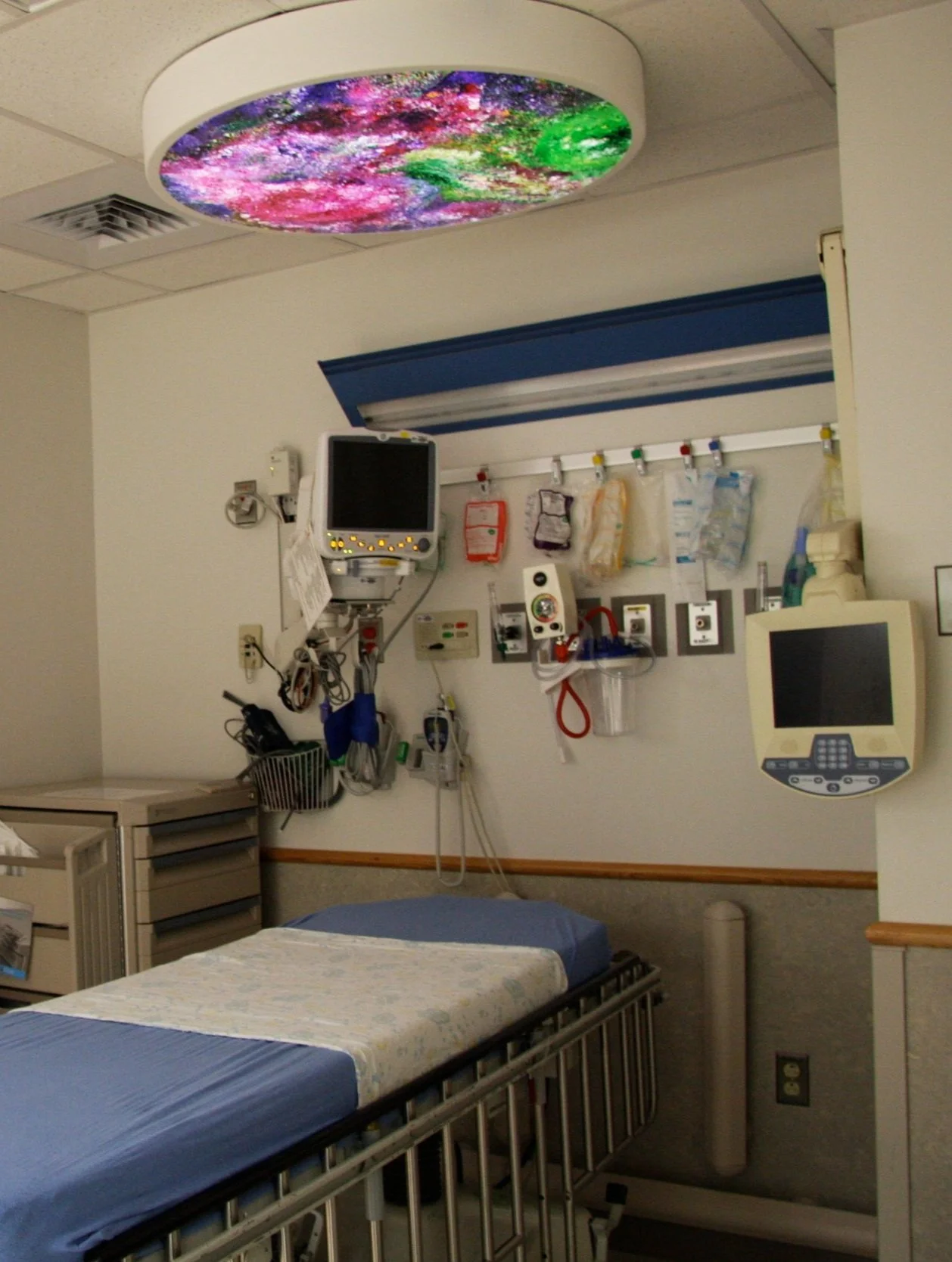Impact verification
Clinical observations, client and patient testimonials, pilot studies, and related research demonstrate that these installations and artworks create immersive healing spaces designed to lower/alleviate over-stimulation and engage the relaxation response.
“Abstract art seeks to break away from traditional representation of physical objects...
It explores the relationship of forms and colors and enables our brain to create new emotional and cognitive associations...
Vara Kamin’s abstract art has been found
to be valuable in promoting transcendence
in stressful areas.”
— Dr. Judy Rollins, PhD, BFA, RN
‘Purpose-built’ Art in Hospitals: Art with Intent
Dr. Judy Rollins, PhD, BFA, RN, is a Scholar at The Institute for Integrative Health in Baltimore, Maryland. She conducted an international study that explored artwork in hospitals. ‘Purpose-built’ Art in Hospitals: Art with Intent (Emerald Publishing 2021) is built on the international study of artwork around the globe.
“Vara Kamin’s paintings generate curiosity and discovery; there is also harmony that soothes and relaxes…There are additional research studies that assist in explaining the ability of non-referential interpretative works of art to promote positive responses: exposure to aesthetically pleasing stimuli can result in the release of endorphins, which help the body relax and enhance mood.”
— Dr. Judy Rollins, PhD, BFA, RN
Arousing Curiosity: When Hospital Art Transcends
HERD Vol 4 No 3 Spring 2011, Pgs. 72–94
Georgetown University School of Medicine
“… caregivers and staff have noticed that patients are less anxious, may require less sedation and need fewer staff resources to complete their treatments when nurses and child life specialists use the images as positive distractions to help ease patients’ anxiety. Since the department has 21 sedation bays and eight magnetic resonance imaging machines, this has a huge impact on workflow and patient throughput.”
— Interview with Chris Tomlinson, MBA, CRA, FAHRA
for “Art that Works,” Health Facilities Management Special Supplement
former Administrative Director of the Radiology Department
The Children’s Hospital of Philadelphia
The Children’s Hospital of Philadelphia study
The hospital has more than sixty backlit ceiling installations of Vara Kamin’s images in interventional radiology, magnetic resonance imaging (MRI), fluoroscopy, and sedation rooms.
Pre-sedation, children gaze at the images, focusing on favorite colors, finding images, naming them, and sometimes narrating stories about them; child life specialists lead them in guided imagery or relaxation exercises such as breathing in the calm colors and breathing out the pain (Rollins, 2011).
“Bakken argues that high-tech treatment accounts for 20% of healing, while ‘high-touch’ treatment and a healing environment account for the remaining 80%.
“Touching Petals”. The Children’s Hospital of Philadelphia, Sedation unitWe propose that interactive artwork such as Kamin’s holds great promise for not only improving the healthcare environment for patients, families, and staff, but, when combined with Child Life designed and facilitated interventions, offers an effective nonpharmacologic method for helping children cope with difficult and painful procedures, and for their parents accompanying them.”
The Children's Hospital of Philadelphia study to explore the ability of Child Life interventions incorporating the use of professional artwork to reduce behavioral distress in children undergoing intravenous (IV) insertion or venous port access. “Exploring the Use of Professional Artwork to Reduce Behavioral Distress in Children Undergoing Intravenous Insertion or Venous Port Access”
Stephanie Rogerwick, MS, CCLS; Judy Rollins, PhD, RN; Melanie Hoynoski, CCLS, CTRS; Loretta Reilly, CRNP




